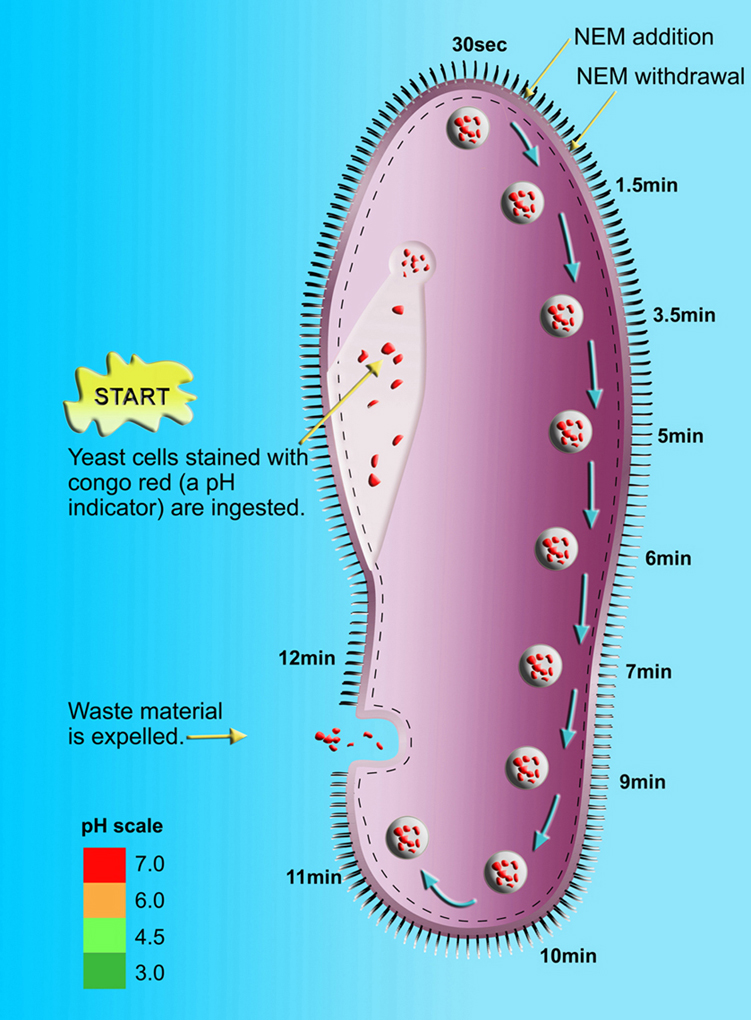| Your professor suggested to add a toxin
called N-ethyl
maleimide (NEM) to the medium in which the Paramecia are grown.
This
toxin prevents membrane fusion, and will thus prevent the fusion of the
food vacuoles to the lysosomes.
You recalled that addition of toxins might influence several phenomena within the cell. After a long discussion (illustrated to the right) you decided to add NEM for a very short while, to minimize the damage. Here is the detailed protocol you've both worked out: |
 |
